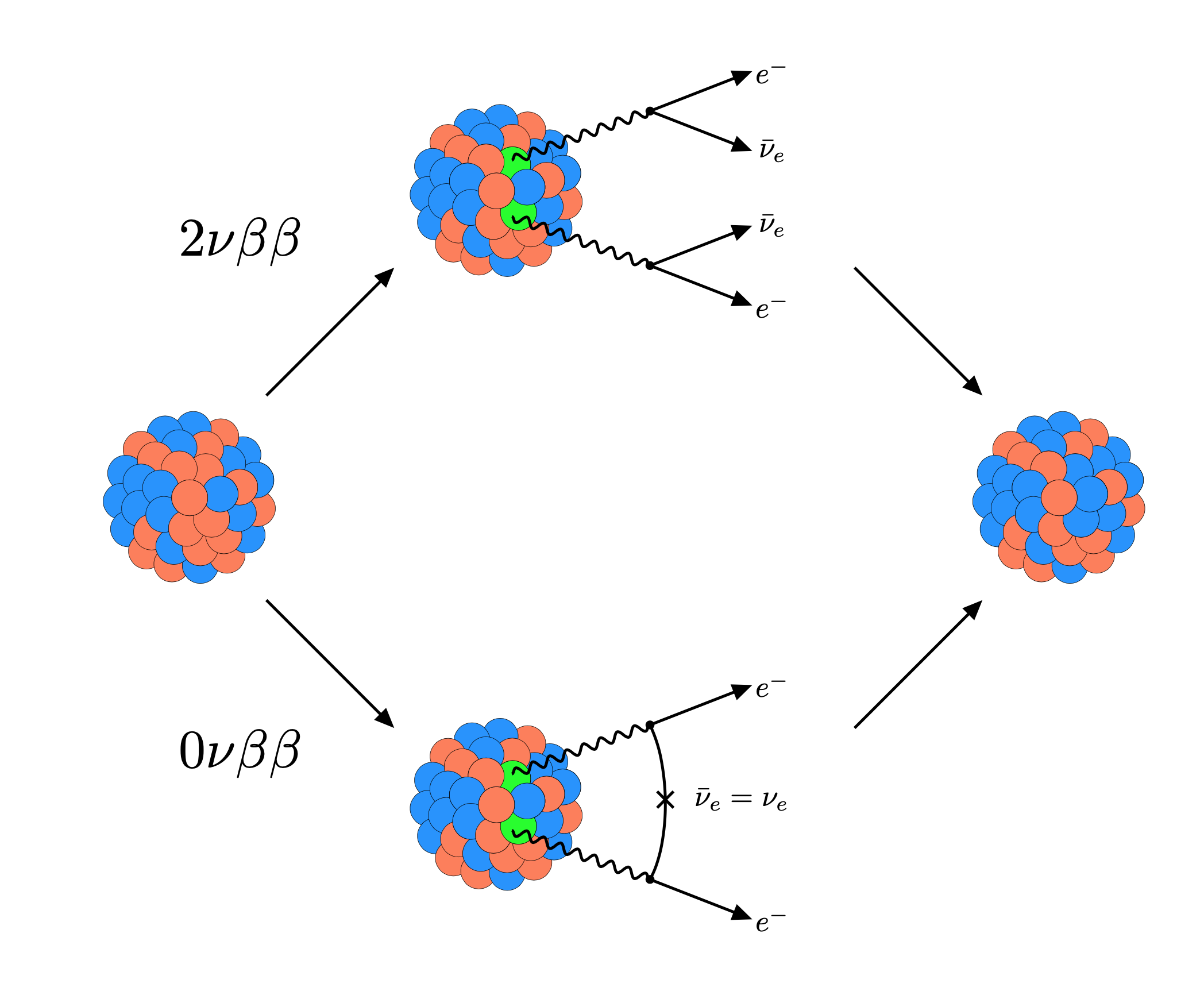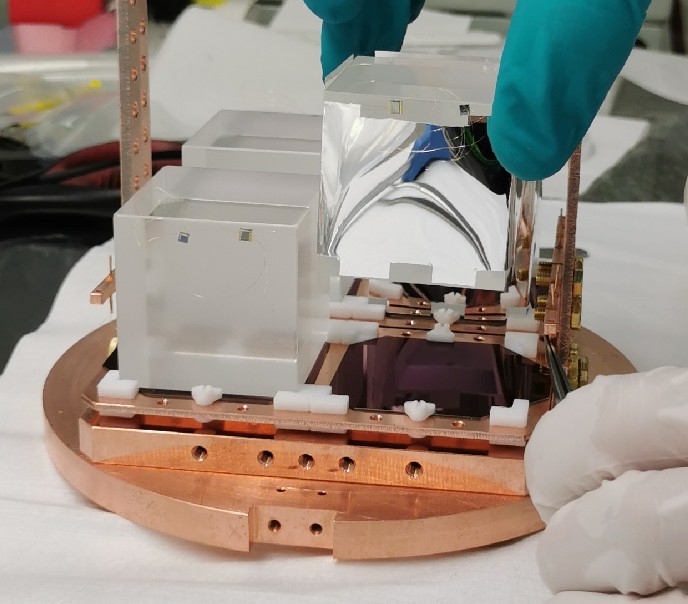Table of Contents
CUPID
The project CUPID 1) is an upgrade of the CUORE experiment, aiming at searching for neutrinoless double beta (0νββ) decay with Li2MoO4 scintillating crystals enriched in 100Mo. The crystals are operated as cryogenic detectors in the zero-background condition for its entire life cycle, which provides the fastest increase of sensitivity over the data collection time. The zero background condition is achievable via the particle discrimination in the scintillation channel.
Physics Goal
Neutrinos have been postulated almost a century ago, and over 60 years have passed since their discovery. Over the past decades, neutrinos of different origins have been measured, including solar, atmospheric, reactor and supernova neutrinos, providing an impressive amount of information on their sources, as well as on the Standard Model of particle physics. Nevertheless, the experimental evidence of non-zero neutrino masses provided by the oscillation experiments unambiguously indicates the existence of new physics beyond the Standard Model. In parallel, several open questions tantalize the physics community since decades:
- What are the fundamental symmetries of the Standard Model, and their corresponding conserved quantities?
- What is the origin of the asymmetry between the amount of Matter and that of Anti-Matter in the Universe?
- Why is the mass of neutrinos much smaller than that of the other leptons?
A possible answer to these questions can be provided by 0νββ decay.
0νββ decay is a process in which a nucleus (A,Z) decays to (A,Z+2) with the simultaneous emission of two electrons, without any counterbalancing emission of antiparticles. Since the introduction of the Fermi theory of β decay, this would be the first example of a process that does not conserve the difference between the number of particles and antiparticles. In the framework of the Standard Model, 0νββ decay is a process that violates the lepton number L, and, more fundamentally, the difference between the baryon and lepton number B-L. Hence, the observation of 0νββ decay would simultaneously prove that the conservation of B-L is only approximate and that the Standard Model is thus just an approximate version of a broader theory, and provide an unequivocal evidence for the existence of matter creating processes. 0νββ is only possible if neutrinos have a Majorana mass component: in this framework, the mass of the three known (light) left-handed neutrinos could be generated by some heavy right-handed partner via the so-called see-saw mechanism, which naturally accounts for the smallness of neutrino masses in comparison to the Higgs-generated masses of all other known particles.
The 0νββ decay signature
0νββ decay is a 3 body decay, with the available energy shared between the daughter nucleus and the two emitted electrons. Given its much larger mass, the daughter nucleus is subject to a negligible recoil. Moreover, for most detector technologies the two emitted electrons are not distinguishable, so only their sum energy is measurable. The experimental signature of 0νββ decay is thus an excess at the Q-value of the reaction, corresponding to the mass difference between the parent and daughter atom.
On the other hand, 2νββ decay is a 5 body decay, with again a negligible nuclear recoil. In this case, the two antineutrinos escape undetected, so only a fraction of the Q-value is shared between the electrons. The signature in this case is therefore a continuum from zero to the Q-value.
The Experiment
The first experimental attempts to detect 0νββ decay are date back to the 1940s. Over the decades, many different technologies have been developed to search for this process on a variety of candidate isotopes. Presently, CUORE2) is one of the most sensitive experiments in the field. It is located at the Laboratori Nazionali del Gran Sasso (LNGS) of INFN, in the Abruzzo region in central Italy. CUORE is composed of 988 TeO2 crystals operated as cryogenic calorimeters at a temperature of 10-15 mK. The crystals act simultaneously as detectors and source of 0νββ decay: in fact, they contain the ββ decay isotope 130Te, that contributes to ~27% of the crystal mass. The CUORE detectors are operated in the largest dilution refrigerator ever build3), capable of cooling down ~1.5 tons of material to base temperature about a month, and operating it stably for years.
 | 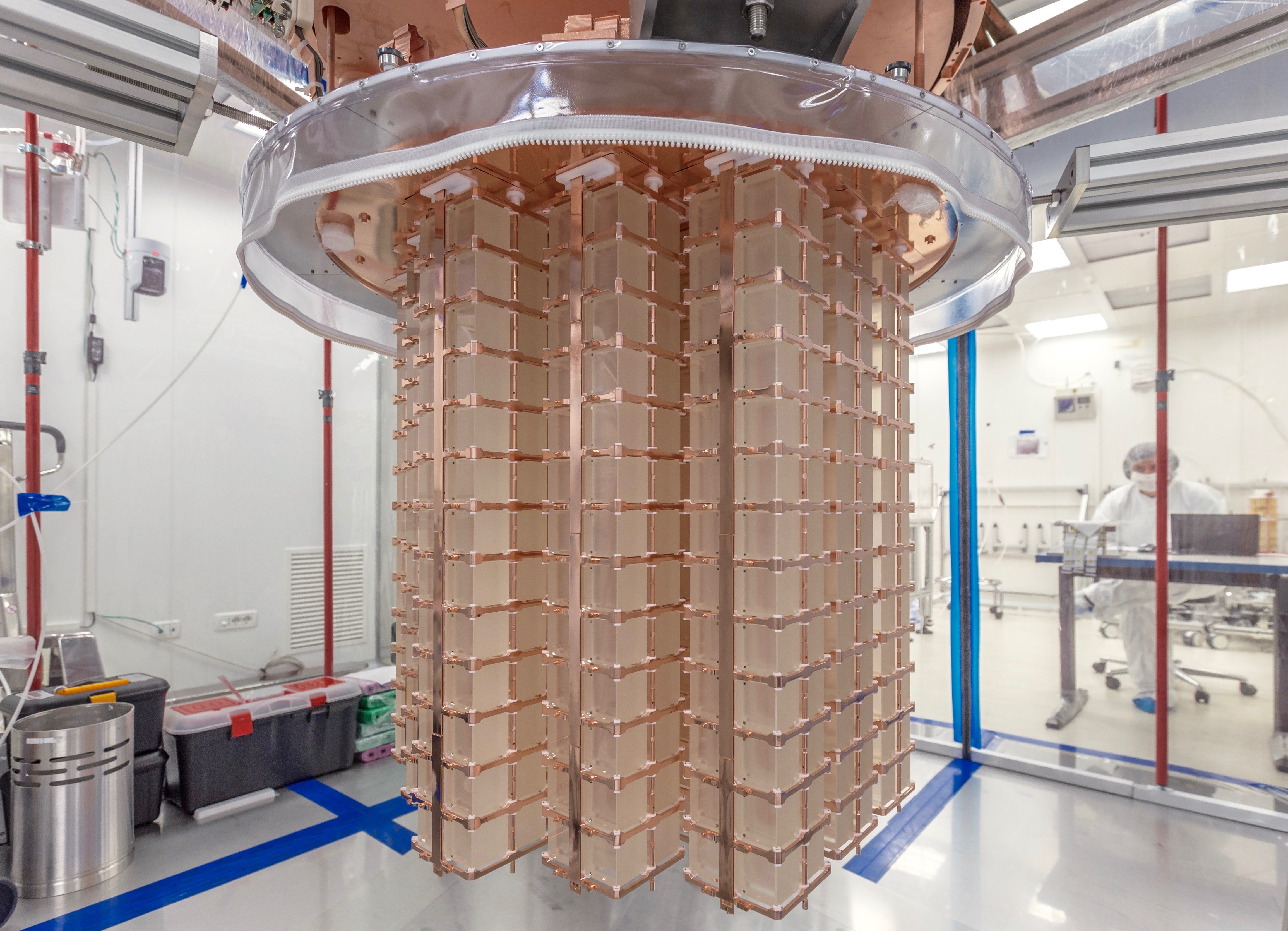 |
| The Gran Sasso National Park, below which the underground lab of LNGS is located. | The CUORE detectors right after their installation in the cryostat. |
CUPID will profit of the established CUORE cryogenic infrastructure, and deploy ~1500 Li2 MoO4 crystals in place of the TeO2 ones. Thus, CUPID will not only change the crystal, but also the candidate isotope. The reason for this choice is twofold: on the one hand, Li2 MoO4 is a scintillating material with a particle-dependent light yield, on the other hand the candidate isotope 100Mo has a Q-value of 3034 keV (compared to 2527 keV of 130Te), which lies above most of the γ background from environmental radioactivity. Special attention is paid to the minimization of the radioactive contamination levels of all employed materials. Using the information from the predecessor experiments CUORE, CUPID-0, and CUPID-Mo, the projected background at Qββ is expected to be at the level of 10-4 counts/keV/kg/yr. CUPID-Mo has robustly demonstrated that Li2MoO4 scintillating bolometers meet the requirement for CUPID. CUPID-Mo was an array of 20 elements that took data until 2020 in the Modane underground laboratory in France, as a follow-up of the LUMINEU project. It has shown the maturity reached by the proposed CUPID technology and the high standard of the Li2MoO4 detectors in terms of energy resolution, α/β rejection capabilities, internal radiopurity, and overall reproducibility of the results.
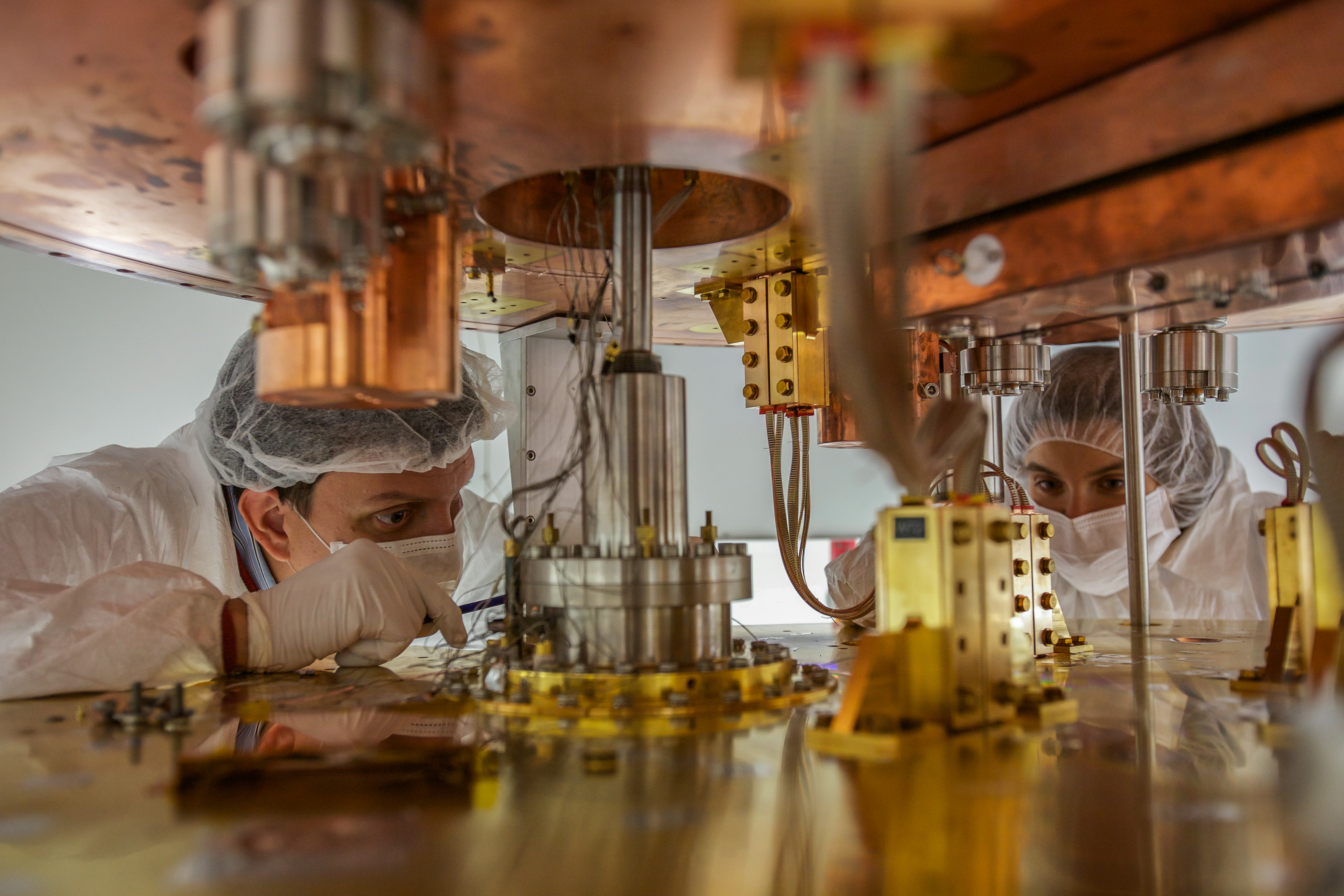 | 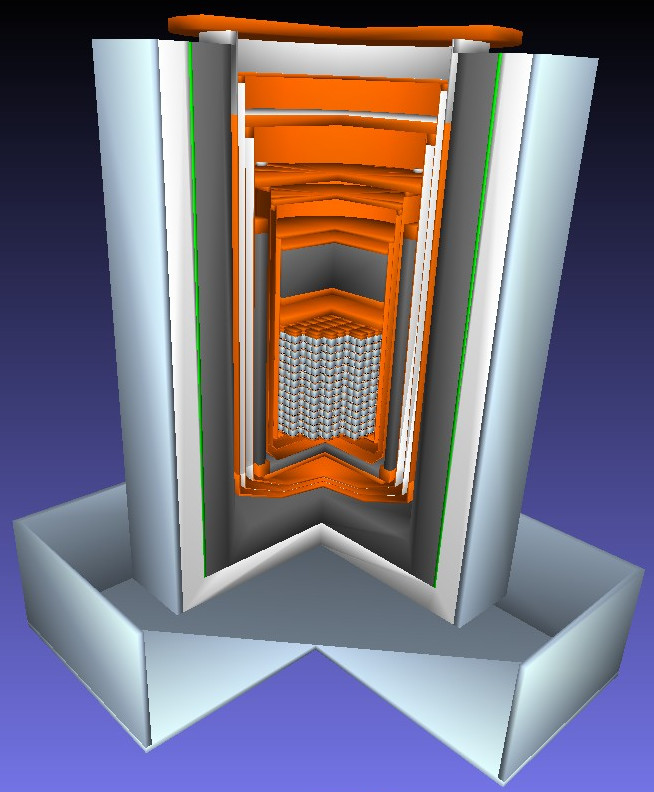 |
| The CUORE/CUPID cryostat during its construction, with the distillation unit visible in the middle. | CUPID geometry in Geant4 Monte Carlo simulation. |
The Detector
In CUPID, the Li2MoO4 crystals are operated as cryogenic calorimeters, and coupled to a light detector. The light detectors are germanium wafers, and are also instrumented as calorimeters. A particle interaction in the crystal produces phonons and scintillation light. The heat from recombining phonons is read by a Neutron Transmutation Doped (NTD) germanium thermistor glued to the crystal. The light escapes the crystal, inducing a phonon signal in the light detector, which is also read by an NTD.

